Those of you who enjoy Thai or Chinese cuisine will love sweet soy sauce. You may not even know that some of your favorite dishes feature this ingredient.
If you like cooking meals with an Asian flair, you will likely come across sweet soy sauce in the ingredient list of recipes you attempt.
Since it is a very specific ingredient used in a narrow genre of recipes, sweet soy sauce is not a staple ingredient kept on hand by many people.
Not to worry. We have you covered! In this post we will provide you with a list of substitutes you can use in place of sweet soy sauce.
Let’s start off with an in-depth explanation of sweet soy sauce.
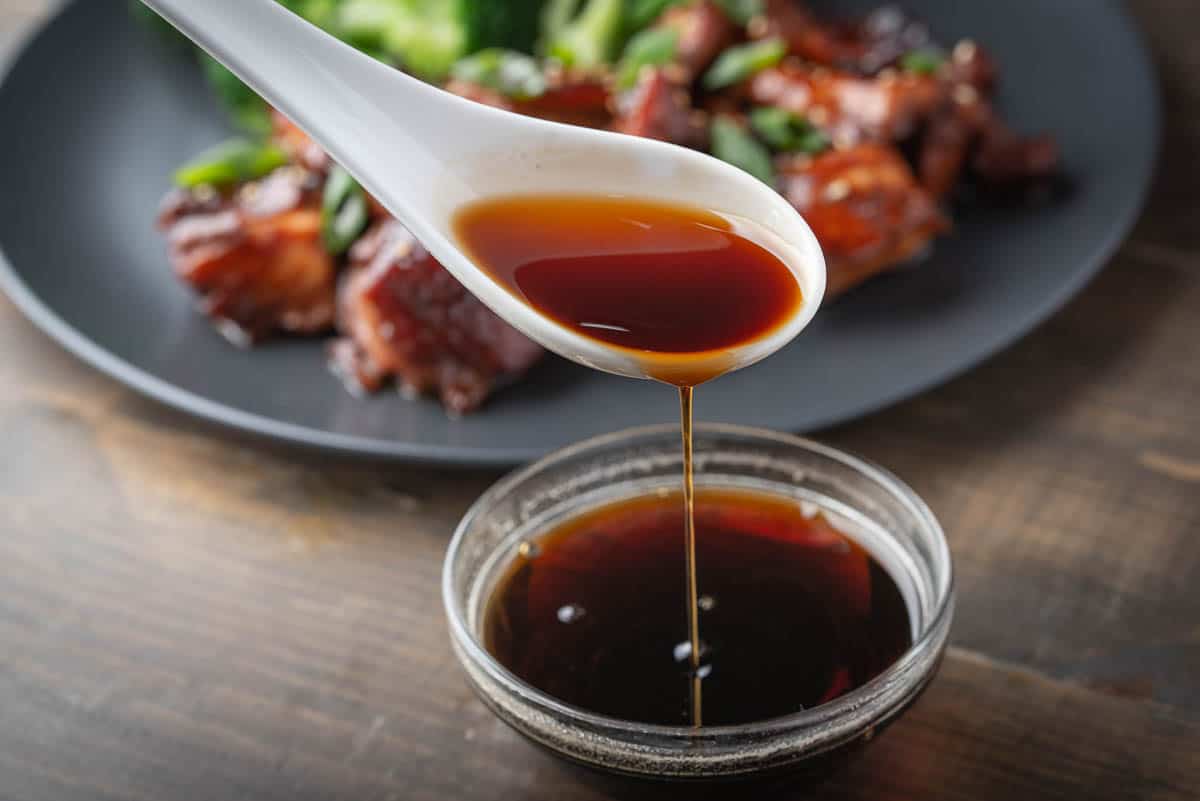
Jump to:
What is Sweet Soy Sauce?
Also called kecap manis or ketjap manis, sweet soy sauce is popular in Southeastern Asian cuisine.
Darker and more viscous than traditional soy sauce, sweet soy sauce has a dark molasses-like caramel flavor. It has a slight smoky undertone and is used to give dishes a rich sweet and salty taste.
Essentially a sweetened version of soy sauce, this sauce is made from soy beans, water, salt, and sugar, usually palm sugar. Wheat, spices, and herbs may be added.
Most soy sauce is made when soybeans are fermented in a salt water brine. A grain such as wheat or rice is often added to assist in the fermentation process.
Since adding sugar during the fermentation process will turn the sugar into alcohol, it gets added to the soy sauce after fermentation. This mixture is heated until the sugar is fully incorporated.
Most versions of sweet soy sauce use a ratio of 1 to 1 sugar to soy sauce, but the amount of sugar can be adjusted to alter the sweetness of the sauce.
Indonesian sauce is called kecap manis. The word kecap translates to soy sauce and the word manis translates to sweet. In this version, spices such as garlic and star anise are added.
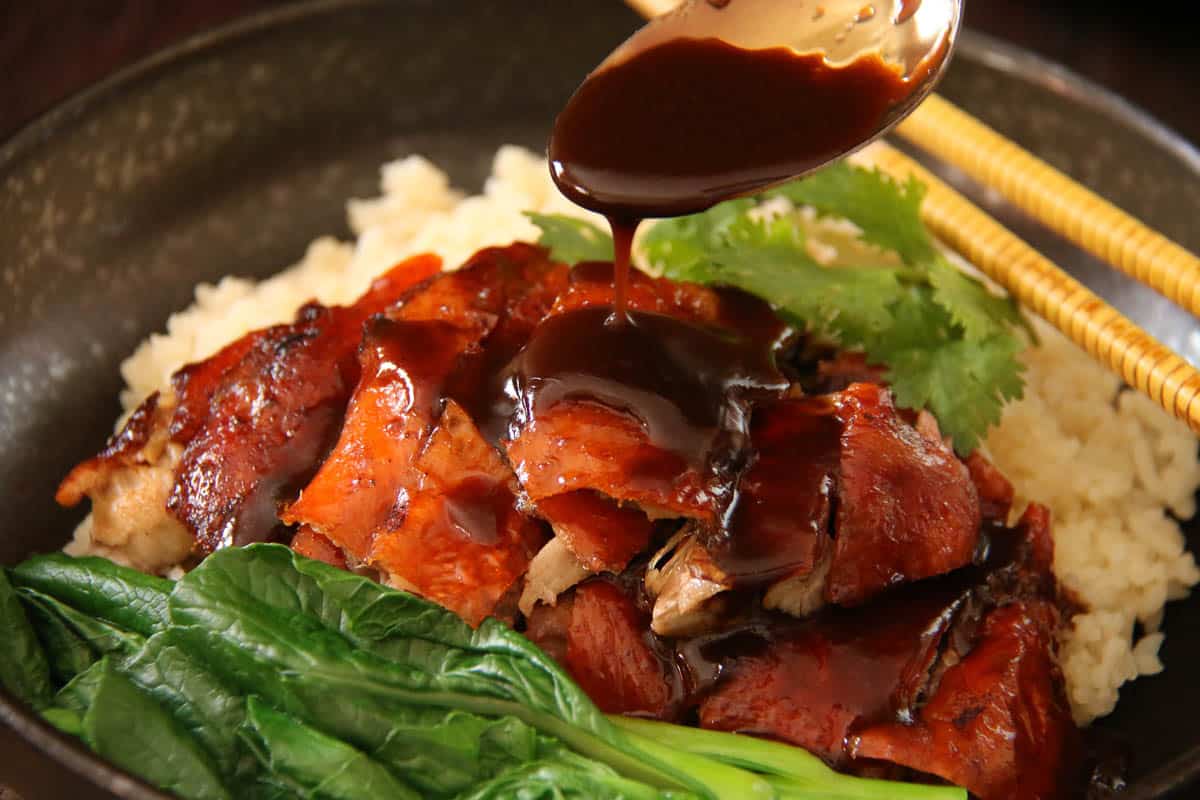
Sweet Soy Sauce Uses
Kecap manis is used in cooking and as a condiment. It is known for the famous Indonesian cuisine fried rice dish nasi goreng or the noodle dish bakmi goreng.
Since Indonesia was colonized by the Dutch, kecap manis is also used in Dutch dishes.
Because of its sweetness, sweet soy sauce is often used sparingly. It is sometimes used to make a dish look more appetizing by adding a deeper color.
Sweet soy sauce pairs well with tofu and rice. It can be used as a dipping sauce or in peanut sauce alongside spring rolls or chicken satay.
Many Indonesian recipes add sweet soy sauce to marinades and when braising meat. It is also used as a glaze on sushi and raw fish.
Sweet soy sauce is not always easy to find at standard grocery stores, but if you have a local Asian market, you can pick some up there. It may also be available online.
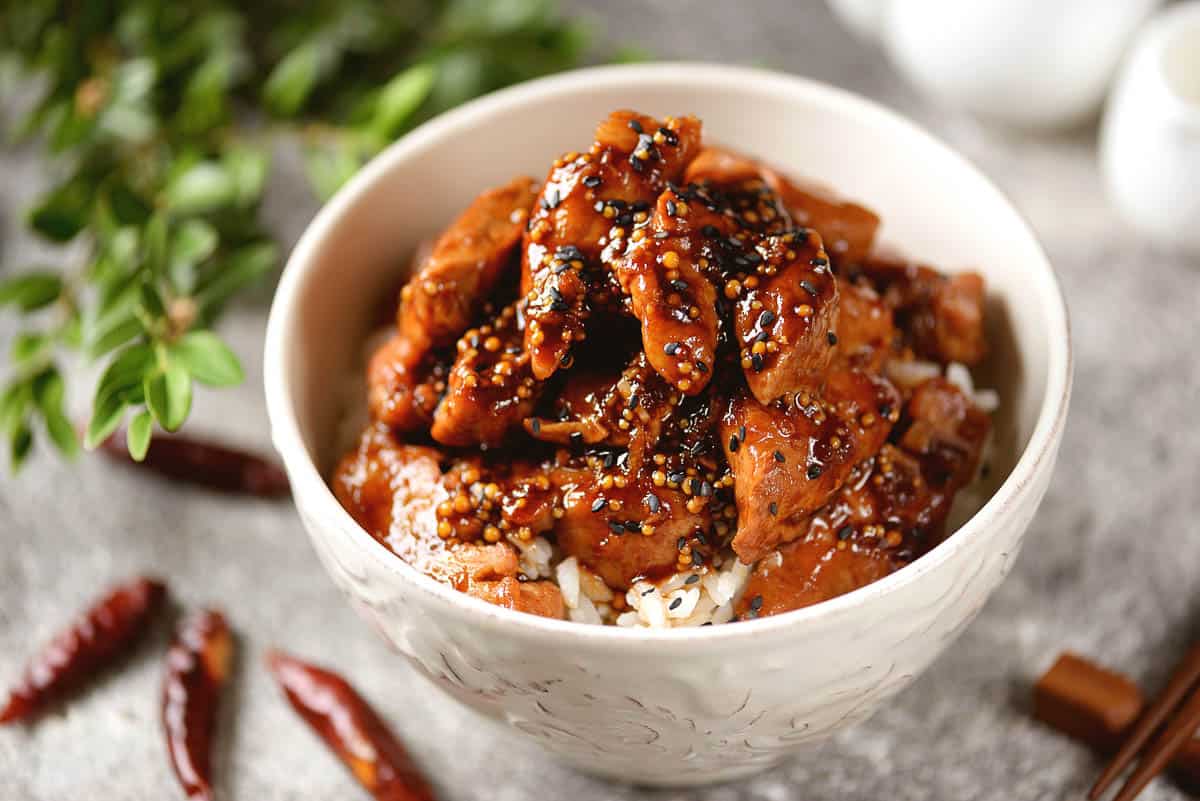
Best Substitutes for Sweet Soy Sauce
Since sweet soy sauce is not widely available, you may be unable to find it locally. Thankfully there are a number of alternatives that can be used in its place.
Let’s start off by learning how to make your own sweet soy sauce.
DIY Sweet Soy Sauce (Soy Sauce & Palm Sugar)
The best substitute for sweet soy sauce is to make your own. It is actually quite simple.
To make sweet soy sauce, you need only a couple ingredients: light soy sauce and palm sugar.
If you want to keep things really authentic, you can even use jaggery instead of palm sugar. Jaggery is an unrefined cane sugar popular in Asia and Africa.
Combine equal amounts of soy sauce, palm sugar, and water in a small saucepan. Bring it to a boil over medium-high heat.
Once boiling, reduce it to a low heat. Be careful as the sugar burns quickly and easily.
Continue to stir while the mixture simmers. Once it reaches a syrupy consistency and becomes a deep amber color, turn off your burner. This can happen fast, so keep a close eye on it.
Since some versions of kecap manis have more spice, you can add any combination of garlic powder, cinnamon, star anise powder, ginger powder, and five-spice powder. You can use the fresh versions of garlic, ginger, star anise, and cinnamon, but you will need to strain the mixture at the end.
If using your homemade sweet soy sauce to replace the kecap manis called for in a recipe, use a 1 to 1 ratio.
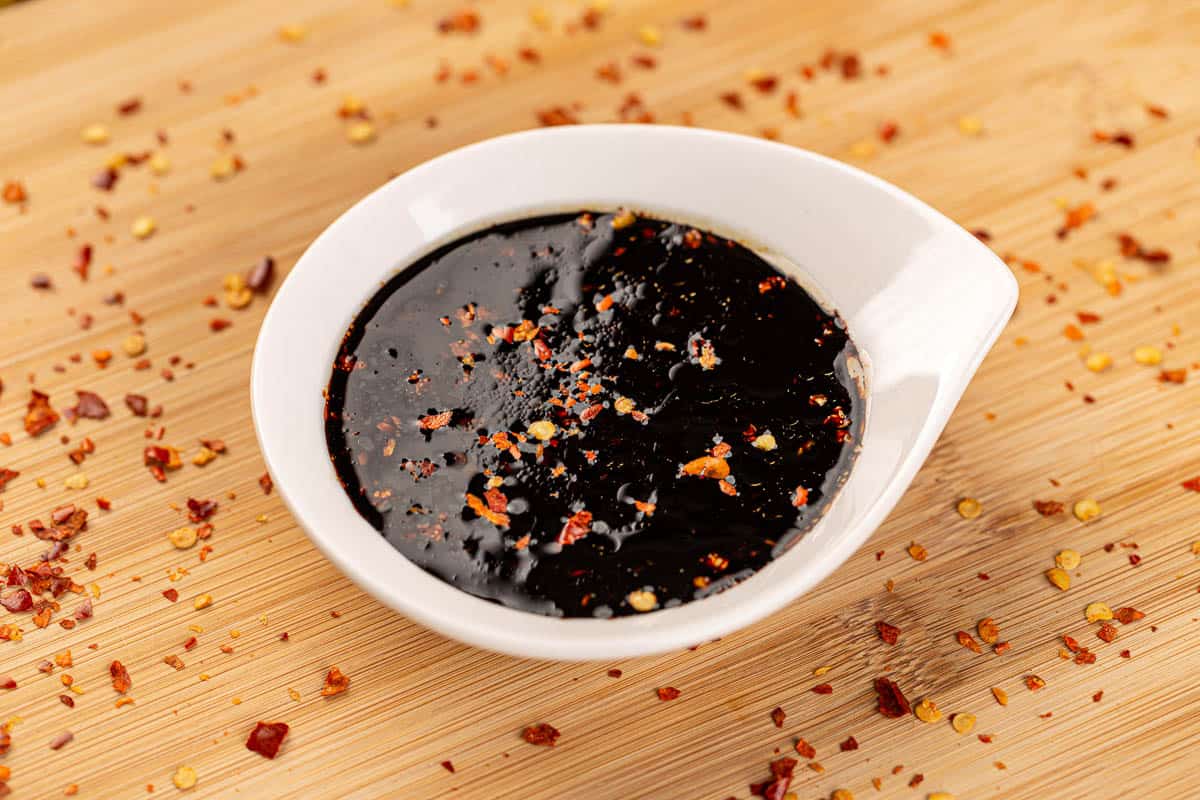
Soy Sauce & Dark Brown Sugar
If you don’t have access to palm sugar or jaggery, you can use brown sugar as a sugar substitute.
Use the same ratio and instructions as the DIY sweet soy sauce recipe.
This mixture is a good replacement for sweet soy sauce in sauces, marinades, glazes, and stir-fries.
This can be used as a kecap manis substitute in a 1 to 1 ratio.
Soy Sauce & Honey or Maple Syrup
Another sweetener option instead of granulated sugar is to use a liquid sweetener such as honey or maple syrup.
For this replacement, use the following ratio: 1 cup of honey or maple syrup for every 2 cups of water and 2 cups of light soy sauce.
Bring this combination to a boil. Then reduce the heat to simmer as you continue stirring. Turn off the heat once you reach the desired consistency.
The soy sauce adds saltiness, while the maple syrup or honey thickens the sauce and gives it a sweet flavor.
It is recommended to use a neutral tasting honey that isn’t very strong or flavored in order for your sauce to end up most like sweet soy sauce.
Use this substitute on grilled meats and vegetables or as a dipping sauce. You can also use it to add extra flavor to soup or salad dressing.
If using this sauce, substitute equal amounts for the amount of sweet soy sauce called for in your recipe.
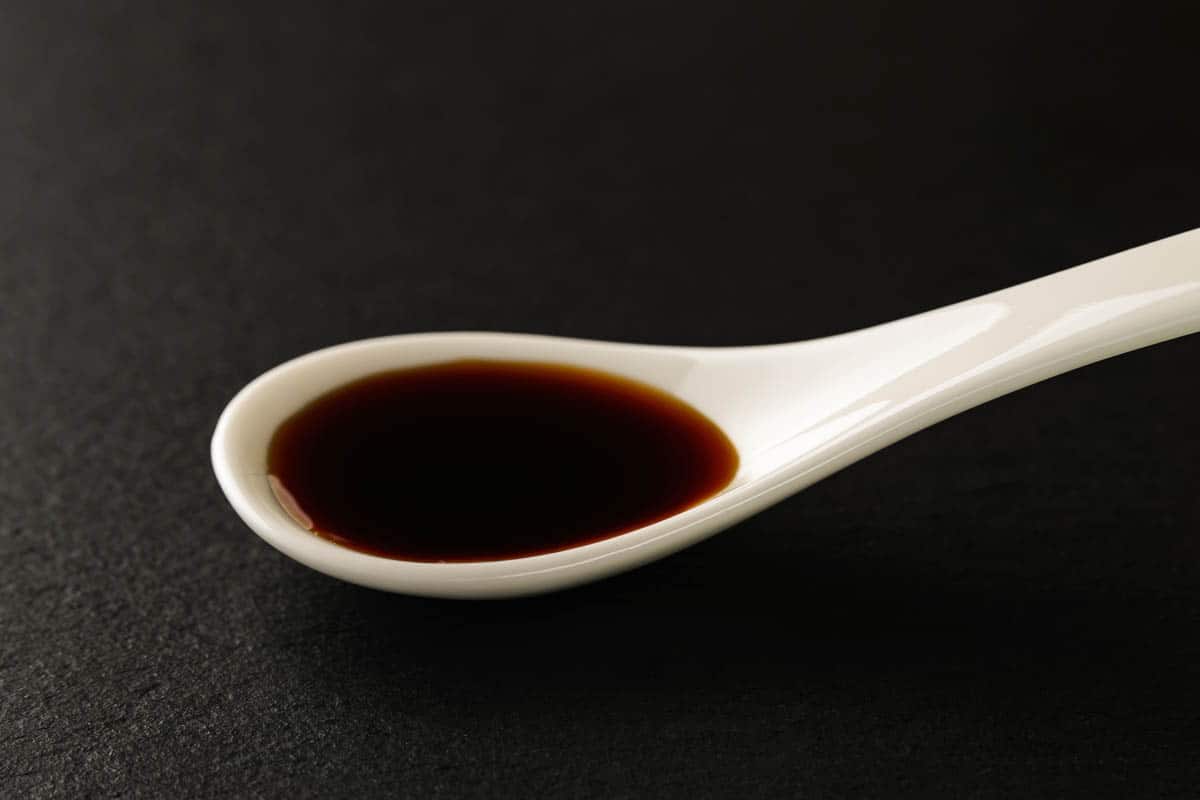
Tamari Sauce & Sugar
Since tamari is usually made without wheat, it is a great substitute for those needing a gluten-free option.
Tamari has a rich color and flavor. It is thicker but not as salty as regular soy sauce.
You can use tamari in a variety of dishes. It works well as a condiment for fish, tofu, noodles, and dumplings. It can also be used in stews, soups, dressings, marinades, and stir-fries.
For this version, you can use any of the above listed sweeteners. Follow the directions specific to the type of sweetener you use.
Use this sauce as a 1 to 1 replacement for sweet soy sauce.
Teriyaki Sauce
Teriyaki sauce can also be used as a replacement for light soy sauce in one of the above recipes.
Soy sauce is actually the base of teriyaki sauce. Additional ingredients such as brown sugar, ginger, and garlic are added to this base. This gives teriyaki a balance of sweet and savory flavors similar to that of sweet soy sauce.
Teriyaki sauce is versatile and its flavor complements a variety of dishes. It works well as a marinade for meats and fish or as a glaze for vegetables. It can be used as a dipping sauce for kabobs or potstickers and can even be used in burgers and on ribs.
This mixture can replace sweet soy sauce in a 1 to 1 ratio.
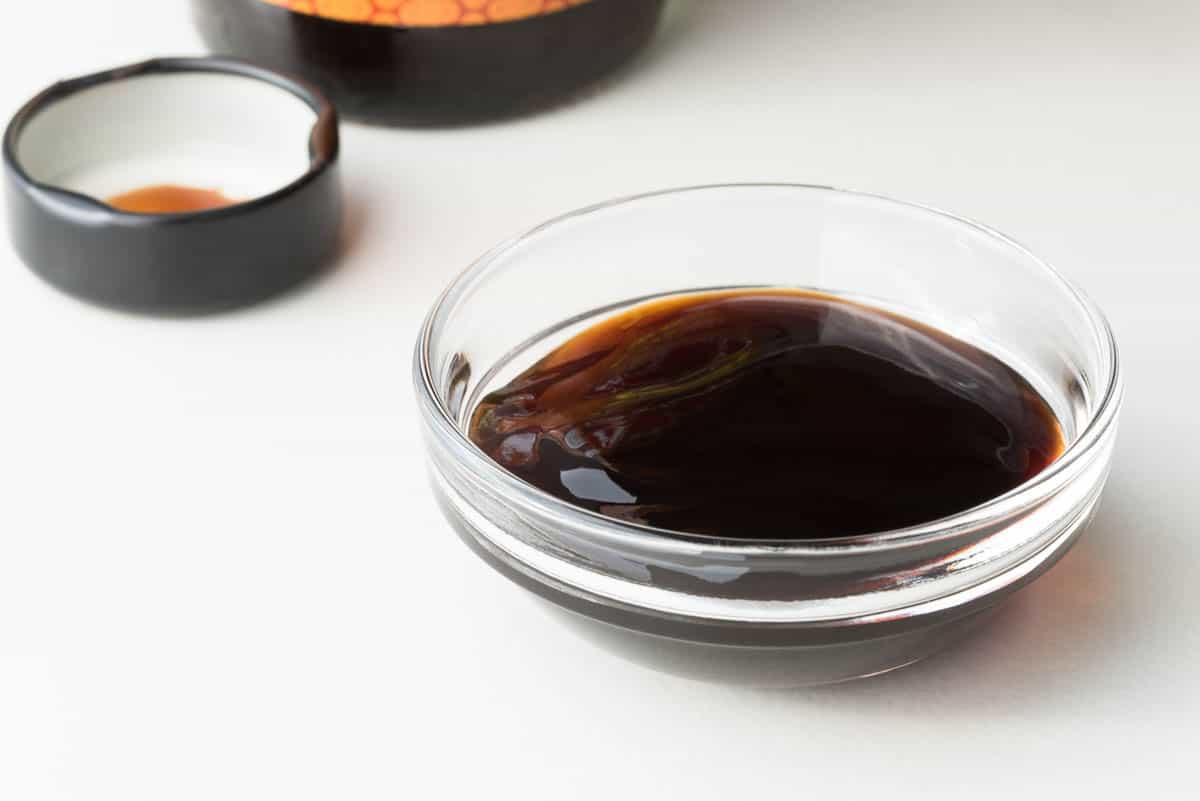
Coconut Aminos & Sugar
This is an excellent replacement for those avoiding both gluten and soy. Coconut aminos is made from the fermented sap of coconut palm trees.
Coconut aminos has the sweetness present in sweet soy sauce, but is less salty. Despite its name, it does not taste like coconut.
Use any of the above recipes, replacing the soy sauce with coconut aminos.
Coconut aminos makes a great flavor enhancer. It can be used in sauces and marinades, salads and dressings, soups and stews, and stir-fries. It can also serve as a dipping sauce.
Use a 1 to 1 ratio when replacing sweet soy sauce for the coconut aminos mixture.
Oyster Sauce
Made of oyster extract, oyster sauce has a thick consistency and an earthy flavor. It has a dark brown color similar to that of sweet soy sauce, but is much less sweet.
Keep in mind that oyster sauce has a seafood flavor, unlike sweet soy sauce.
Add palm sugar or another sweetener to more closely replicate the flavor of sweet soy sauce. Use 2 parts sweetener and 1 part oyster sauce.
Use oyster sauce for barbecue sauces and marinades, stir-fries, and in meat and vegetable dishes.
Oyster sauce can replace sweet soy sauce in a 1 to 1 ratio.
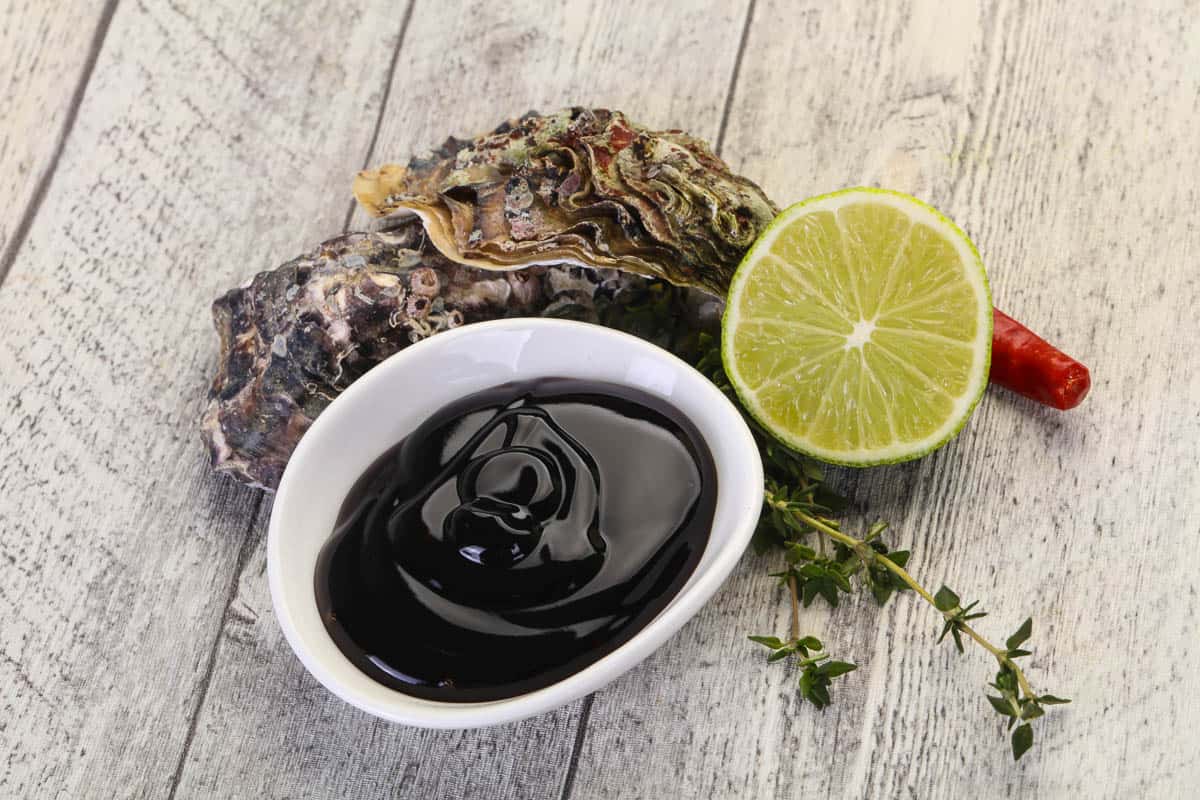
Hoisin Sauce
Hoisin sauce is thick and dark like sweet soy sauce. It is salty with a hint of sweetness.
It shares some common ingredients with sweet soy sauce. It is made of fermented soybeans, sesame oil, vinegar, garlic, a sweetener, chilies, and five-spice powder. Some versions include other ingredients.
This sauce is a great substitute for sweet soy sauce in noodles and duck and pork dishes. It can be used for grilled foods such as vegetables. It also works well as a dipping sauce.
Keep in mind that hoisin sauce is not as sweet as sweet soy sauce. You can add a sweetener such as palm sugar if desired.
You can replace sweet soy sauce with hoisin sauce in a 1 to 1 ratio. This partially depends on the amount called for in the recipe. It is best to use hoisin sauce as a replacement in recipes that call for minimal amounts of sweet soy sauce, since hoisin sauce is salty.
Honey & Fish Sauce
Another soy-free substitute, this option makes an excellent replacement for sweet soy sauce.
Fish sauce shares the salty flavor profile of soy sauce. Combine the saltiness of the fish sauce with the sweetness of the honey and you will have a great substitute.
This combination adds a depth of flavor to sauces, marinades, and stir-fries. Or use it as a condiment or dipping sauce.
This sauce can be used in place of kecap manis in a 1 to 1 ratio.
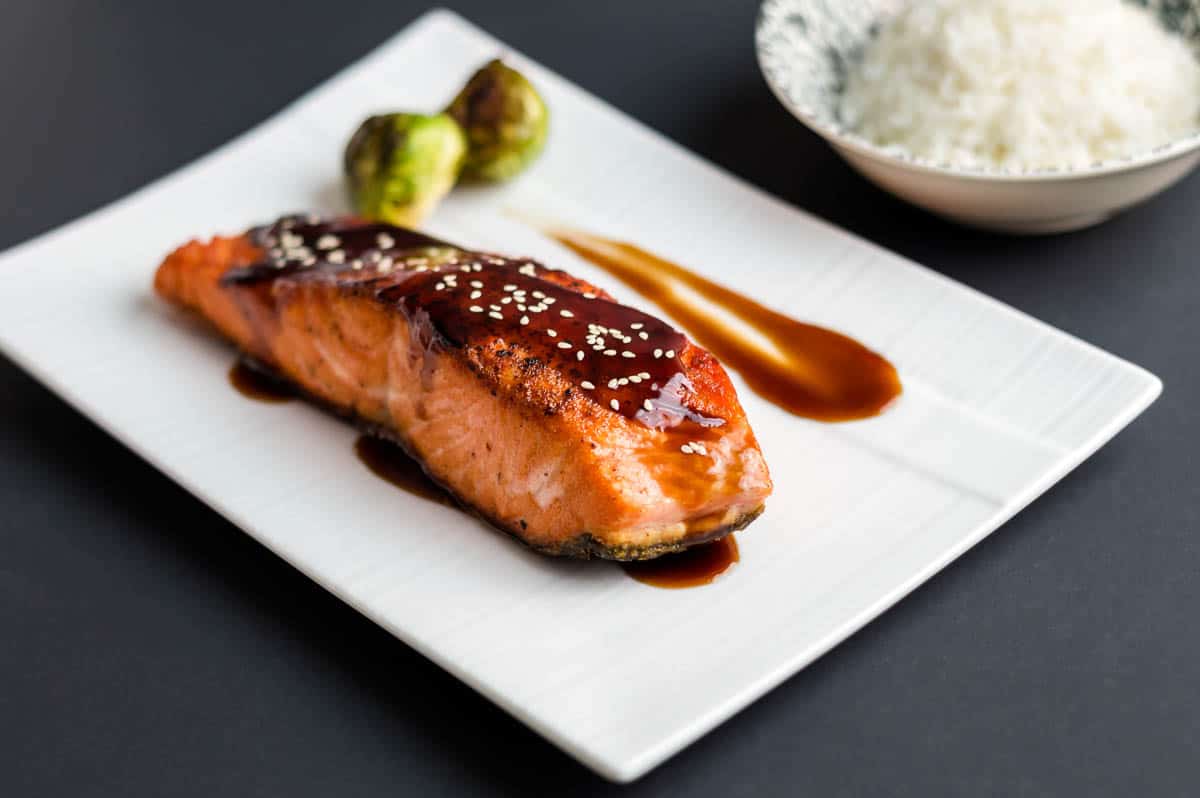
Tianmian Sauce
Also called tianmian jiang or sweet bean sauce, tianmian sauce has a flavor similar to kecap manis.
This sauce is made from fermented soybeans, wheat flour, salt, and sugar. It tastes sweet and salty.
This sauce is most commonly used in pork stir-fries or as a condiment on noodles or Chinese pancakes.
Be aware that this ingredient will probably be even harder to find than sweet soy sauce, so it should not be your first choice as a replacement.
If you are able to get your hands on tianmian sauce, use a 1 to 1 ratio when using it in place of sweet soy sauce.
Shoyu Sauce
Shoyu sauce is a Japanese soy sauce typically made from fermented soybeans, wheat, water, and salt, although there may be variations with differing ingredients.
Because of the lack of sugar, it will be significantly less sweet than kecap manis, but it is slightly sweeter than regular soy sauce. This makes it a good replacement for sweet soy sauce.
This sauce can be used as a table sauce for topping dishes, or to add an umami flavor to sauces, dressings, marinades, and dips.
Use a 1 to 1 ratio when substituting sweet soy sauce with shoyu sauce.

Liquid Aminos
Not to be confused with coconut aminos, liquid aminos are made from soybeans.
Liquid aminos contain less salt than regular soy sauce. It has a slightly sweet umami flavor.
A benefit to using liquid aminos is that it is a good source of amino acids, without any preservatives, artificial colors, or chemicals.
Use liquid aminos to add flavor to your marinades, soups and stews, sauces, stir-fries, and dips.
Substitute liquid aminos for sweet soy sauce in a 1 to 1 ratio.
Conclusion
As you can see, there is no cause for concern the next time you see sweet soy sauce listed as an ingredient.
There are a variety of excellent substitutes you can use or create with ingredients that you likely already have in your kitchen.
Now you are prepared to tackle all of those recipes you have been meaning to try. Using one of these sweet soy sauce alternatives will give your dish that Asian flair you have been looking for.
Do you have any other tried and true substitution recommendations? Please let me know in the comments!


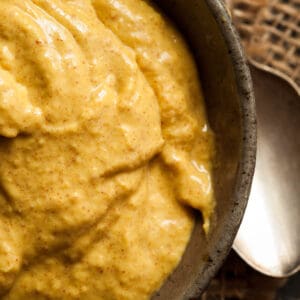

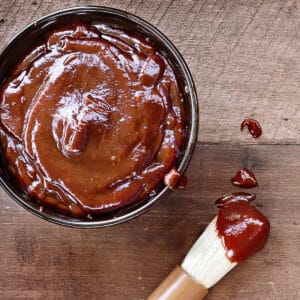
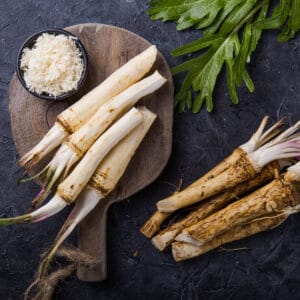
Leave a Reply